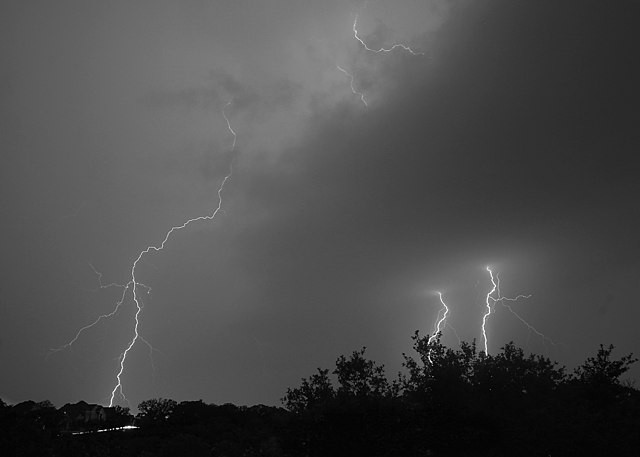A powerful storm system that ravaged parts of the central United States over Memorial Day weekend, claiming at least 20 lives, has moved into the eastern half of the country. The destructive weather left a trail of devastation across Texas, Oklahoma, Arkansas, and Kentucky, obliterating homes and injuring hundreds.
The National Weather Service's Storm Prediction Center has issued severe thunderstorm warnings for more than 7 million people in Georgia and South Carolina as the storm system advances. Heavy rain and strong winds are expected to hit parts of the East Coast, with officials urging residents to take necessary precautions. Over 120 million people are currently under extreme weather alerts, with the highest concentration along the East Coast.
The weekend storms were particularly deadly, with fatalities reported in four states. Arkansas suffered the highest toll with eight deaths, followed by Texas with seven, Oklahoma with two, and Kentucky with two. In Kentucky, Governor Andy Beshear declared a state of emergency early Monday, citing "multiple reports of wind damage and tornadoes."
Texas experienced significant devastation, particularly in Cooke County, near the Oklahoma border, where a tornado struck a rural area, killing seven people, including two children. Governor Greg Abbott reported that about 100 people were injured, and more than 200 homes and structures were destroyed. "The hopes and dreams of Texas families and small businesses have literally been crushed by storm after storm," Abbott said during a news conference.
In Oklahoma, the town of Claremore, near Tulsa, was effectively "shut down" due to inaccessible roads and downed power lines. The Indianapolis 500 also faced disruption, starting four hours late after a severe storm hit the area, forcing officials to evacuate around 125,000 race fans.
The storm's path of destruction extended into Arkansas, where state emergency officials reported eight storm-related deaths. Notably, two deaths were attributed to circumstances exacerbated by the storm, including a heart attack and a case of oxygen deprivation due to a power outage. In Kentucky, a man was killed when a tree fell on him, and in Oklahoma, two people died in Mayes County.
As of Monday, power outages affected hundreds of thousands of residents across multiple states, including over 187,000 in Kentucky, 84,000 in Alabama, 74,000 in West Virginia, 70,000 in Missouri, and 63,000 in Arkansas.
The severe weather also impacted local communities in various states. In Farmers Branch, north of Dallas, Hugo Parra described taking shelter with 40 to 50 people in a bathroom as the storm sheared off the building's roof and walls. "A firefighter came to check on us and he said, 'You're very lucky,'" Parra recalled. "The best way to describe this is the wind tried to rip us out of the bathrooms."
Further north in Carrollton, Texas, Kevin Dorantes recounted calling his father and brother to take cover in a windowless bathroom as a tornado approached. Though they survived, Dorantes later found two severely injured individuals in a nearby smashed house.
The recent deadly tornadoes come amid forecasts predicting a particularly active hurricane season, with the National Oceanographic and Atmospheric Administration anticipating eight to 13 hurricanes and 17 to 25 named storms. April saw the second-highest number of tornadoes on record across the country, with at least five fatalities reported in Iowa from tornadoes last week.
Harold Brooks, a senior scientist at the National Severe Storms Laboratory, attributed the recent spate of tornadoes to a persistent pattern of warm, moist air. This pattern has contributed to the instability of the atmosphere, making conditions ripe for severe weather outbreaks.






